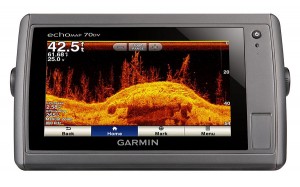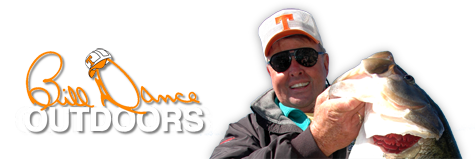Consistently Catch Bass, Study Structure & Cover, Part I
Posted: August 6th, 2014 by Bill Dance
(Note to reader: This is the first part of a two-part blog, detailing the importance of being able to consistently look for and locate a lake’s structure and cover for your bass-fishing success.)
I’m sure you have an angling buddy that, no matter what, almost always catches fish. And go ahead and admit it, as much as it may bruise your ego; sometimes he manages to do this when you do not. So, with that in mind, I’m also sure the first word that pops out of your mouth to describe this lucky dog is not necessarily the one I’m thinking of right now. (Hey, let’s be nice, here, even if he might deserve the other name, too.)
 Seriously, I’m betting the (nice) word you could most definitely call your buddy that always catches them is “consistent” and I don’t mean just consistent in putting fish in the livewell. He also has to be consistent elsewhere. It has been my observation that people atop their field, fishing are otherwise, are always CONSISTENT. They find integral parts that make something work and ALWAYS make these parts fit into their game plan.
Seriously, I’m betting the (nice) word you could most definitely call your buddy that always catches them is “consistent” and I don’t mean just consistent in putting fish in the livewell. He also has to be consistent elsewhere. It has been my observation that people atop their field, fishing are otherwise, are always CONSISTENT. They find integral parts that make something work and ALWAYS make these parts fit into their game plan.
Let’s just take good form, for example. Whether it’s a pitcher throwing a baseball, a golfer’s swing, or even a bowhunter, with all of them a consistent and proper form is a big deal. (And hey, we all know the back-lash that can result when we fail to perform a cast properly.) There are just things one has to do EVERY time to be routinely successful.
The same is true of successful fishing, there are elements of consistency. There are standard (sometimes even basic) things that should always be done to help yield success.
One of these constants for all successful bass anglers I know is their ability to find where the fish live. These anglers are very keen at zeroing-in on where bass live. Experience and effort allows them to do this on nearly every trip.
They know how to not only find structure, but also know how to “read” it.
Structure by simplest definition is the geological makeup of the lake floor, regardless of whether the lake is manmade or natural. And bass rely and relate to it in a major way, just as they do cover (such as limbs, logs, stumps, rocks, or other objects in the water).
In fact, ichthyologists have noted that bass in a tank void of structure will swim about as if they are lost. They seemingly had to have something to relate to. In that same tank, if cover was placed on one side, the bass were instantly drawn to it. This appeal is instinctive. In the life of a bass structure and cover are essential to survival. Early in the life cycle cover and structure help bass avoid becoming prey, while later in the life cycle it helps them be the predator, as it may be used as ambush points or places where baitfish likewise school.
Because the life of a bass revolves around structure and available cover, fishermen who become adept at locating different forms of underwater terrain invariably catch more fish. The more we learn about how these super creatures relate to structure and cover in our lakes and rivers, the more consistent we will become at winning our battles against bass.
I will continue Part II of consistently catching fish by locating structure and cover in my next blog.
As always, catch one for me!

